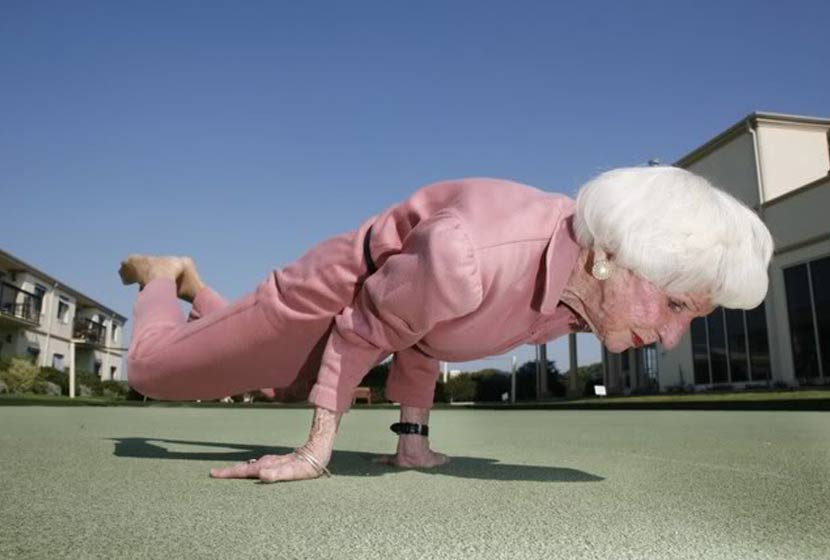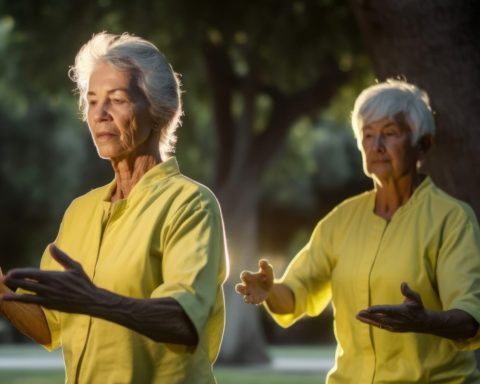The city of Eindhoven, in the Netherlands, is transforming itself into a health path adapted to everyone: faced with the observation of an ageing population, many companies have launched the Silver Economy to meet the growing needs of the elderly. Local authorities are also directly concerned. How can they work to ensure that their citizens maintain their health and physical autonomy? How can they create structures to encourage physical exercise? Denovo, a trans-European design firm, has made adapting the environment to seniors its specialty and works with Dutch communities to improve the quality of life of their residents.
With nearly one in three French people over 60 years of age by 2016, it is important to address the issue of the accessibility of public space and its attractiveness to older populations. We note that the Nordic countries are much further ahead than the Latin countries in this awareness of the ageing population, despite numerous initiatives in French towns and cities in particular.
Among the players in the Silver Economy, we must not forget the crucial role that communities play in stemming social isolation. By modifying infrastructures through design, local authorities are fulfilling one of their missions: transforming public space into a genuine place for intergenerational mixing. This is the mission entrusted to the Denovo firm, which has worked with several Dutch municipalities to improve their infrastructures with a view to better integrating senior citizens through universal design.
Slabs to get seniors moving
In August 2014, the city of Eindhoven (Netherlands) created, in partnership with the Denovo firm, a fun health trail adapted to seniors, making the most of its street furniture. Eindhoven, the city of the former Philips factory headquarters converted into a design anthill, has the reputation of also being the city that experiments with new intergenerational ways of living. The Kwiek project is an alternative to fitness trails, turning street furniture into sporting opportunities. It consists of simple plates to be fixed to the ground with a picto explaining the movement to be made. In front of a bench, a post, a simple border ... any walker can stop in front of the picto and follow the exercise, alone, with friends or family. The designer, Manuel Wiffels, explains that this project was co-designed with senior citizens in order to meet their needs in terms of activity but also image. One of the main challenges was the graphic design of the pictograms, which had to be legible but above all not outdated!
The proposed healthy exercises are indicated by slabs integrated into the sidewalks. The idea behind Kwiek slabs is simple: for a minimal investment and by using its pre-existing infrastructure, a community can encourage seniors to get out of their homes to create a bond and engage in physical activity.
Le design universel : le nouvel enjeu de l’urbanisme
Universal design or design for all aims to design, develop and market everyday products, services, systems or environments that are accessible and usable by the widest possible range of users, an approach that is diametrically opposed to "design for old", which only targets senior populations at the risk of stigmatising them. Denovo is a design firm based in Strasbourg specializing in universal design since 2005. Some of its achievements: the Tango caneA Strand Rollator beach walker, concrete slabs for Kwiek street fitness, a bathroom for a senior citizens' residence,...
For Nicolas Reydel, founder and director of Denovo, the universal design approach is also part of a logic of cost reduction, which has been adopted by many local authorities and companies. By taking into account the particular needs of senior citizens from the design of objects or furniture, the multiplication of infrastructures is avoided.

Taking into account accessibility in the urban environment
Taking into account the mobility of older people and accessibility in the urban environment is an important issue in order to improve their quality of life in the city, without going too far: the city remains above all intergenerational.
The World Health Organization rewards cities that promote the development of infrastructure for the elderly and invest efforts and resources to improve the lives and well-being of their senior citizens.
Since 2008, thehe WHO has launched its World Network of Age-Friendly Cities programme.. She set up a downloadable guide on its website which is intended as an incentive for city administrations to become aware of the importance of older people and to encourage them to take action for their well-being. The aim is to adapt existing structures and create new ones adapted to the use of older people, particularly in terms of transport or medical services.
In France, the consideration of accessibility, particularly in the urban environment, has been reinforced by a law (11 February 2005) which imposes accessibility in facilities receiving the public, residential buildings, roads, public spaces and transport. A particularly important point of this law is the consideration of accessibility in a "chain" of movements: movements must be possible on the continuity of the journey.
Faced with the ageing of the population, urban planning agencies (through the FNAU) and the Fondation de France have been thinking about integrating ageing into urban planning documents. (1). In this synthesis, it is a question of reflecting on the needs and expectations of older people in terms of housing, transport, leisure, public facilities... in all their diversity.
Today, more than a third of the French population is over 50 years old. According to a study by the Crédoc In 2010, over the past ten years, the growth in the share of senior citizens in the population has accelerated sharply, with an annual rate of 1.8%, compared with 0.3% per year over the previous twenty years. This pace should remain sustained (1.1 % per year) over the next ten years. However, French society tends to value young people, for cultural reasons, and has relatively little interest in older people. The increase in life expectancy and the arrival at retirement age of the first wave of the baby boom make it necessary to take better account of the lifestyles of older people.
Many incentive actions are carried out in foreign countries. The most ageing countries such as Japan and Germany have implemented
numerous public actions. In Germany, the three-year "Age as an economic factor" programme was launched by the Federal Ministry for Family, Pensions, Women and Youth in 2009. Aimed at SMEs, this action has taken the form of a platform for exchanges and meetings and has been associated with programmes to support SMEs in launching innovations.
In Japan, as early as 1994, a regulatory framework was implemented in 1994 making it compulsory for senior citizens to be accessible to public places and public transport. Standards
have been developed to guide industry in the development of products for the elderly.
In South Korea, although the elderly population is not very large, a strategic plan for innovation for the elderly population was put in place as soon as the country was established.
1992. Les initiatives publiques ont placé les PME au centre de l’industrie des seniors. En 2005, le « Senior friendly industry promotion program » a soutenu l’effort industriel dans les secteurs de la robotique, des TIC et des objets ergonomiques. L’État a mis en place des infrastructures nécessaires à la recherche et au développement des produits.
In the United States, public policy creates a framework that encourages private initiative. For example, the MIT AgeLab or the Administration's Strategic Action Plan for Older Persons is partly funded by private companies.
As a result of these incentives, companies in these four countries have developed the concept of Design for All, which aims to simplify the use of products.
(1) "Seniors : What integration in planning and urbanism documents? ", Fondation de France, FNAU (November 2007)
![]()












